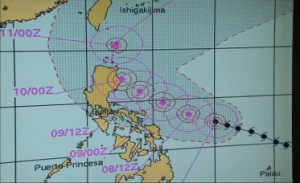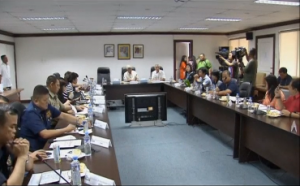
MAY 8 (Reuters) –The Philippines is preparing to evacuate residents along its northeastern coast as a typhoon approaches, as well as those near a rumbling volcano that has been spewing steam and ash over a central province, officials said on Friday (May 8).
Typhoon Noul was about 480 km (300 miles) northeast of the town of Borongan in Eastern Samar province early on Friday, with wind gusts of up to 185 km per hour (115 mph), and was expected to make landfall as a category four storm at the weekend.
The National Disaster Agency said a pre-disaster preparedness meeting in Manila that it has alerted the local governments in the affected areas to prepare evacuation shelters, equipment and relief goods for any eventualities.

“We are continuously monitoring, including the gradual increase of the level of preparedness of all the LGUs (Local Government Units), and we expect that before it hits, or before we feel the effects in the Bicol region, we will have more than 90 percent or approaching 100 percent on our preparedness level for these areas,” said Department of Interior and Local government information chief Allan Tabell.
Thousands of passengers have already been stranded in seaports along the central and eastern Philippines after authorities stopped vessels from sailing because of rough seas.
The typhoon, the fourth to hit the Southeast Asian country this year, was expected to bring heavy to intense rainfall when it makes landfall in the northeast, the weather bureau said. It was then expected to weaken as it headed towards the Japanese island of Okinawa by Tuesday.
Officials warned that heavy rain from the typhoon could cause “lahar”, or flows of mud and debris, around Mount Bulusan, a volcano that has been spewing ash this week in the eastern province ofSorsogon.
“With regards to the amount of rainfall, our recommendation is again vigilance and readiness of communities in predetermined lahar hazard zones,” said Philippine volcanology bureau research specialist Winchelle Sevilla.
Officials have designated schools and gymnasiums as possible shelters.
Typhoon Noul was also expected to trigger landslides and flash floods, with government officials alerting regional offices along the storm’s projected path by text, email and phone calls.
An average of 20 typhoons cross the Philippines annually. Super typhoon Haiyan was the most destructive in recent years, leaving more than 8,000 people dead or injured in 2013.








